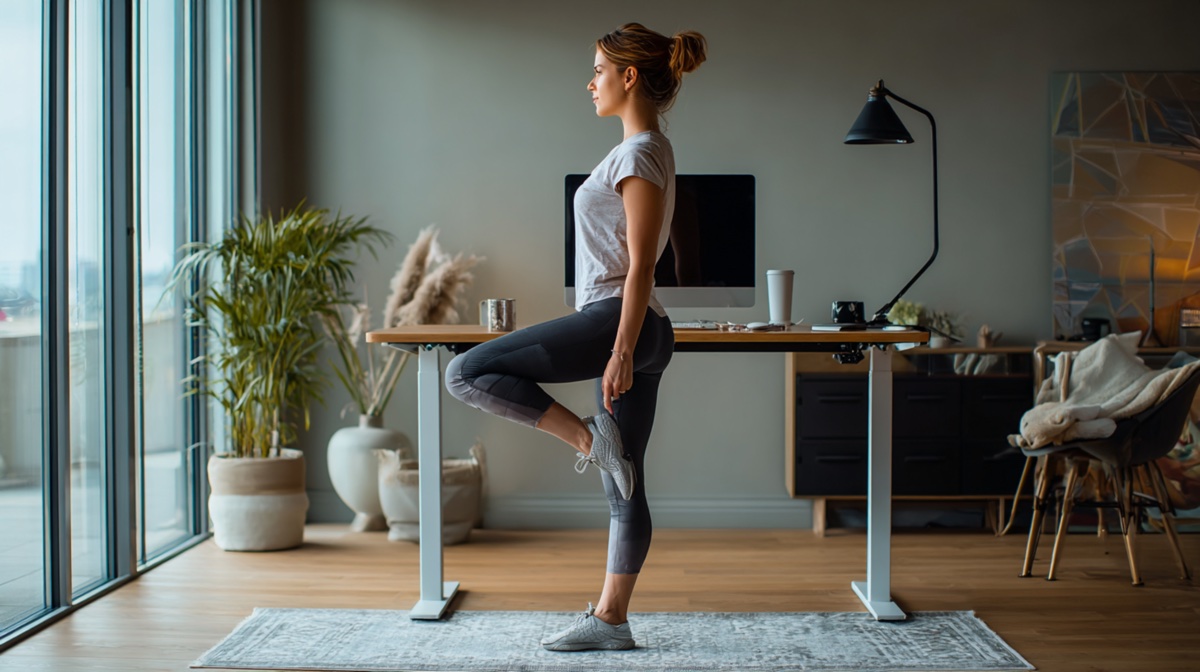You've likely heard the term "sitting is the new smoking" due to the health risks associated with being sedentary. In response, many people are seeking simple ways to incorporate more movement into their day, even while working. Standing desks are popular in many workplaces, offering an alternative to long hours of sitting. But like any tool, how you use it can make all the difference in how your body responds.
Finding the Right Balance
It's important to note that standing all day isn't necessarily better than sitting all day; it's the balance between the two that matters. Switching between sitting and standing every 30 to 60 minutes may help reduce fatigue and muscle stiffness. If you're using a standing desk, pay attention to how you're standing. Locking your knees or leaning to one side over time can place extra pressure on your back or hips.
Small Adjustments, Big Results
Your monitor should be at eye level, with your shoulders relaxed and wrists in a neutral position. A footrest or small step can also be useful – resting one foot at a time may help shift weight and support posture. Supportive footwear or a cushioned mat can reduce strain on your feet and legs if you stand for long periods.
Standing Desk Setup Tips
- • Monitor at eye level to prevent neck strain
- • Shoulders relaxed, not hunched up
- • Wrists in neutral position while typing
- • Use a footrest to alternate weight distribution
- • Wear supportive shoes or use an anti-fatigue mat
- • Switch between sitting and standing every 30-60 minutes
It's Not About Perfection
A standing desk won't automatically improve posture, but when used effectively, it can support a more active and engaged workday. Paying attention to how your body feels throughout the day can help guide you in making small changes that add up.
Movement Still Matters
Even with a standing desk, regular movement is key. Shifting your weight, taking short walks, or stretching can prevent stiffness and support better circulation throughout the day.
Simple Movement Ideas While Standing
- Weight Shifts: Shift your weight from one foot to the other every few minutes
- Calf Raises: Rise up on your toes and lower back down to improve circulation
- Ankle Circles: Lift one foot slightly and rotate your ankle in both directions
- Shoulder Rolls: Roll your shoulders backward to release tension
- Gentle Stretches: Reach your arms overhead or do gentle side bends
The Chiropractic Perspective
From a chiropractic standpoint, the key to workplace wellness isn't just about standing versus sitting – it's about maintaining proper spinal alignment and encouraging regular movement. Whether you're sitting or standing, your spine should maintain its natural curves, and your body should be free to move and adjust throughout the day.
Regular chiropractic care can help address any imbalances or restrictions that develop from prolonged static positions, whether sitting or standing. Our team can also provide personalized ergonomic advice based on your specific work setup and body mechanics.
Key Takeaways
- • Balance is key – alternate between sitting and standing
- • Proper setup prevents strain and discomfort
- • Movement matters more than static positions
- • Listen to your body and adjust as needed
- • Consider professional guidance for optimal workplace ergonomics
Need Workplace Wellness Support?
Want help making your workday more posture-friendly? We're happy to chat – feel free to get in touch for practical tips and support tailored to your specific needs.
Remember, the best workstation setup is one that encourages movement and supports your body's natural alignment. Whether you choose a traditional desk, a standing desk, or a combination of both, the key is to stay aware of your posture and keep your body moving throughout the day.
